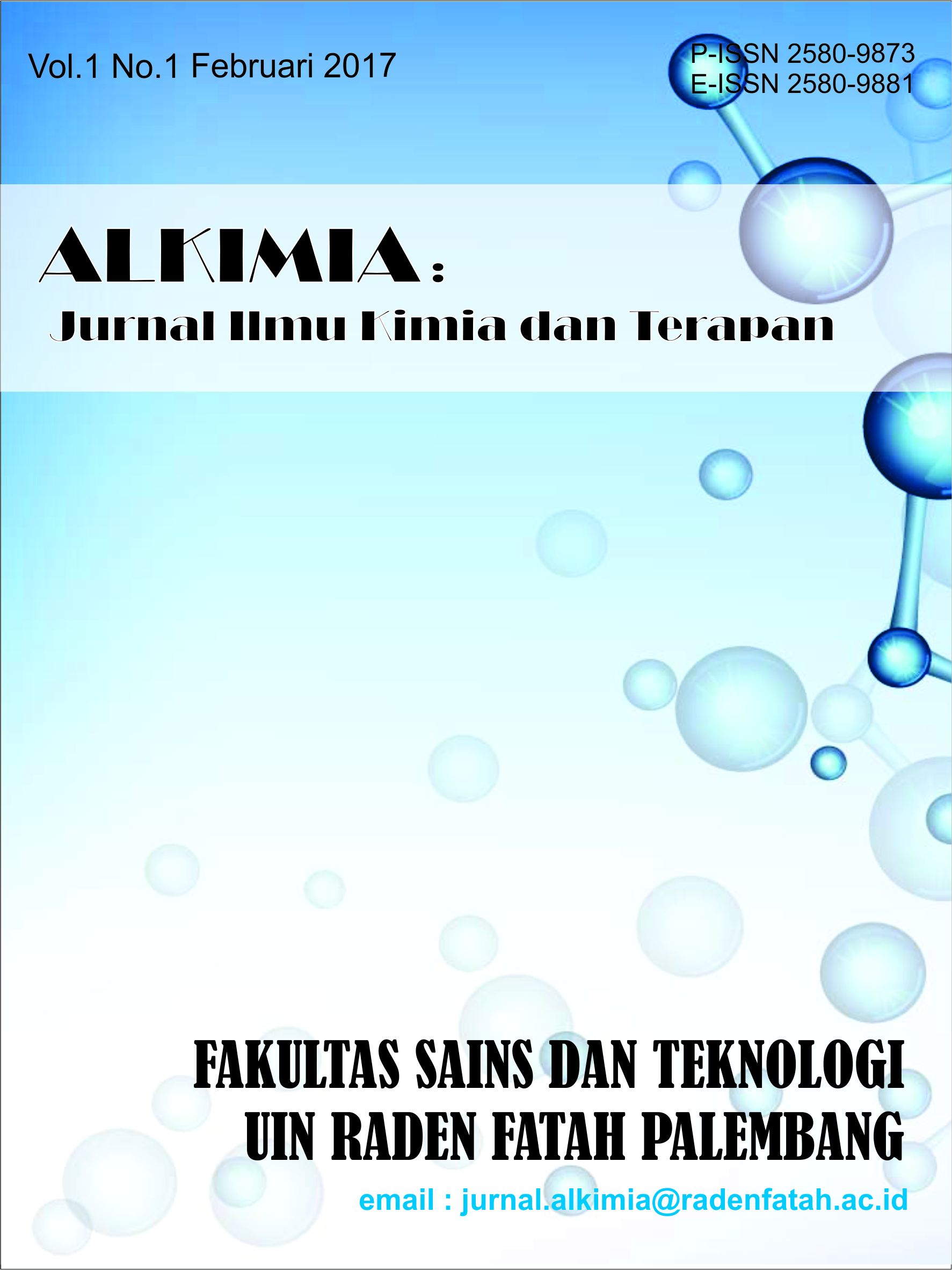Antibacterial Effectiveness Test of Mulberry Leaf Extract (Mours Alba .L)Against Propionibacterium Acnes Using Agar Diffusion Method
DOI:
https://doi.org/10.19109/6ty7ry86Keywords:
Antibacterial, Mulberry leaf extract, Proponibacterium acne, Agar diffusionAbstract
Propionibacterium acnes bacteria are gram-positive bacteria that cause acne. This study aims to determine the antibacterial activity of mulberry leaf extract (Mours Alba L) against Propionibacterium acnes bacteria using the agar diffusion test method. Based on the results of phytochemical screening of mulberry leaf powder containing flavonoids, saponins, tannins, steroids, and triterpenoids which function as antibacterials. Based on the antibacterial activity test, mulberry leaf extract at concentrations of 20%, 30%, 40%, and 50% is effective in inhibiting the growth of Propionibacterium acnes bacteria. This can be proven from the results of the inhibition zone diameter, there is an increase in antibacterial effectiveness. Along with the increase in the concentration of mulberry leaf extract in inhibiting the growth of Propionibacterium acnes bacteria , namely at a concentration of 20%, the average diameter of the inhibition zone was 11.94 mm, then at a concentration of 30% the average diameter of the inhibition zone was 13.3 mm at a concentration of 40% the average diameter of the inhibition zone was 12.5 mm and at a maximum concentration of 50% the average diameter of the inhibition zone was 11.84 mm. The results of the study concluded that the most effective mulberry leaf extract inhibited the growth of Propionibacterium acnes bacteria at a concentration of 30% with a strong category.
References
E. Kartikawati, K. Hartono, SM Rahmawati, and IK Kusdianti, “Antibacterial Activity of Extract and Fraction of Chinese Betel Leaf (Peperomia Pellucida L.) against Propionibacterium acnes ATCC 1223,” J. Med. Sains [J-MedSains], vol. 3, no. 1, pp. 21–34, 2023, doi: 10.30653/medsains.v3i1.507.
ZZ Ollyvia, N. Febriyana, D. Damayanti, and IGAI Ardani, “The Association between Acne Vulgaris and Stress among Adolescents in Kenjeran, Surabaya,” J. Psikiatri Surabaya, vol. 10, no. 1, p. 33, 2021, doi: 10.20473/jps.v10i1.23483.
PE Sari, “KNOWLEDGE OF ACNE SUFFERERS (ACNE VULGARIS) ABOUT SKINCARE IN RW 013 MUSTIKA GRANDE HOUSING AREA, BURANGKENG SETU,” J.
Farm. IKIFA, vol. 4, no. 1, pp. 88–100, 2023.
MTP Rivaldi, “Teenagers' Anxiety Regarding Acne Problems at SMAN 1 Kesamben Jombang,” vol. 9, no. 2, pp. 158–168, 2021.
PDM Jayanti, “Antibacterial Activity Test of Ethanol and N-hexane Fractions of Red Onion (Allium cepa L.) Skin against Propionibacterium acnes bacteria that cause acne,” Stikes Bhakti Husada Mulia Madiun, p. 18, 2021.
W. Madelina and Sulistiyaningsih, “Review: Antibiotic Resistance in Acne Treatment Therapy,” J. Farmaka, vol. 16, no. 2, pp. 105–117, 2018.
Y. Zai, AY Kristino, SL Ramadhani Nasution, and O. Natali, “Test of the Antibacterial Effectiveness of Soursop Leaf Extract (Annona Muricata Linn.) Against Propionibacterium Acnes Bacteria,”
BIOLINK (Jurnal Biol. Enkung. Ind. Kesehatan), vol. 6, no. 1, pp. 65–72, 2019, doi: 10.31289/ biolink.v6i1.2244.
AI Aliah, W. Wahyuni, and N. Bachri, “Inhibitory Power Test of Ethanol Extract Gel Formula of Mulberry (Morus alba L.) as Anti Acne Against Propionibacterium acne Bacteria.,” J. Farm. Galen. (Galenika J. Pharmacy), vol. 5, no. 2, pp. 206–213, 2019, doi: 10.22487/j24428744.2019.v5.i2.13663.
Adriana dian Nurpangesti, “Formulation and Activity Test of Mulberry Leaf Extract (Morus Alba L.) Acne Gel Against Staphylococcus Epidermidis and Propionibacterium Acne Bacteria,” Suparyanto and Rosad (2015, vol. 5, no. 3, pp. 248–253, 2020.
M. Aris, S. Syachrir, A. Buang, and M. Taufiq, “Formulation of Antibacterial Toothpaste from Mulberry Leaf Extract (Morus alba L.) with Duck Eggshell Abrasive Material Making of Duck Eggshell Toothpaste,” vol. 9, no. 2, pp. 313–323, 2023.
Ali A et al, “Antibacterial Detection in Mulberry Leaf Extracts (Morus alba L.) from Several Plant Sampling Locations in South Sulawesi,” J. Bionature, vol. 17, no. 2, pp. 69–
, 2016, [Online]. Available: https://ojs.unm.ac.id/bionature/article/view/2833/1545
A. Sepriani, HM Nasution, DEP Mambang, and YP Rahayu, “Antibacterial activity test of n-hexane and ethyl acetate fractions of kenanga leaves (Cananga odorata (Lam.) Hook. F. & Thomson) against Staphylococcus epidermidis bacteria,” J. Pharm. Sci., no. 1, pp. 73–79, 2023, doi:
36490/journal-jps.com.v6i5-si.371.
A. Rhahmah, “Optimization of Mulberry Leaf Herbal Tea (Morus Alba) Production,” J. Teknol. Agro- Industry, vol. 2, no. 2, pp. 14–18, 2016, doi: 10.34128/jtai.v2i2.14.
RJ Putri, N. Agnesia, N. Hatidjah, A. Halid, J. Pusmarani, and T. Surianto, “Formulation and Antiacne Activity Test of Solid Soap Preparations from Ambon Banana Stem Extract (Musa paradisiaca var. sapientum) Against Propionibacterium acnes,” Makal. Farm. Dan Farmakol., no. 20–24, pp. 20–24, 2023, doi: 10.20956/ mff.Special.
JV Kiriwenno, M. Yunita, and VZ Latuconsina, “Comparison of Antibacterial Activity Between Katang-Katang Leaf Extract (Ipomoea pes-caprae L.) and Seith Oil Against the Growth of Staphylococcus aureus,” Maj. Farm., vol. 17, no. 1, p. 122, 2021, doi: 10.22146/farmaseutik.v17i1.58292.
Downloads
Published
Issue
Section
License
Copyright (c) 2025 Elly Rustanti Rustanti, Fino Ahmadi

This work is licensed under a Creative Commons Attribution-ShareAlike 4.0 International License.
- The author saves the copyright and gives the journal simultaneously with the license under Creative Commons Attribution License which permits other people to share the work by stating that it is firstly published in this journal.
- The author can post their work in an institutional repository or publish it in a book by by stating that it is firstly published in this journal.
- The author is allowed to post their work online (for instance, in an institutional repository or their own website) before and during the process of delivery. (see Open Access Effect).







.png)




